Clean water is one of our most basic needs. However, more often than not, our water is polluted with contaminants such as iron and lead. The EPA set the maximum allowable limit of lead in public drinking water at 15 µg/L. Consuming water with lead concentration higher than this limit can cause severe health consequences and even death, like we saw in the Flint water crisis of 2014.
The health implications of drinking lead contaminated water makes it the more important to remove any trace of this metal from your drinking water.
So, how is lead removed from water? The easiest and most effective way to remove lead from drinking water is through either reverse osmosis filtration or water distillation.
Removing lead via reverse osmosis requires purchasing a reverse osmosis system with NSF certification for lead removal, such as the Waterdrop G3 800 RO system or the Aquatru RO filter.
For water with extremely high lead concentration, the best option would be to purchase a whole house lead water filtration system to filter water across the entire house, as well as completely replacing old water pipes that may be leeching lead into the water.
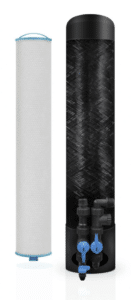
- Filtration technology: 0-5-micron filtration and adsorbent media
- Filter type: Whole house water filter
- Lead reduction rate: Minimum of 99%
- The number of reduced contaminants: Not provided by the manufacturer
- Filtration capacity: 8 GPM
- NSF 53 certification: Not certified
- Warranty: Lifetime warranty
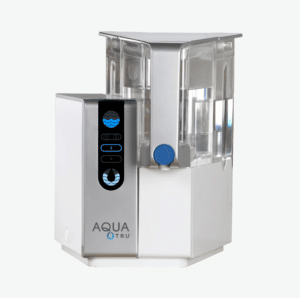
- Filtration technology: Reverse osmosis and Claryum
- Filter type: Countertop
- Lead reduction rate: Minimum of 99.1%
- The number of reduced contaminants: 83+
- Filtration capacity: 600 – 1200 gallons
- NSF 53 certification: Certified
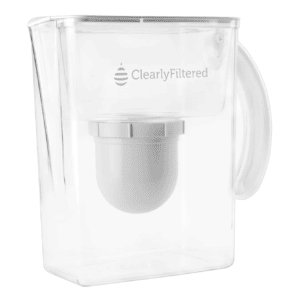
- Filtration technology: Affinity Filtration
- Filter type: Water filter pitcher
- Lead reduction rate: Minimum of 99.3%
- The number of reduced contaminants: 365+
- Filtered Water Capacity: 10 cups (80oz)
- NSF 53 certification: Certified
- Warranty: Lifetime
Here’s a step-by-step guide to help you identify and remove the source of lead in your water:
- Identify the source of lead
- Test lead levels in your water
- Choose appropriate lead treatment method
- Re-test your water for lead
Step 1: Identify the Source of Lead in Your Water
There are a few ways that lead can enter your water. The culprit might be corroded pipes or municipal water supply contamination like in the Flint water crisis of 2014.
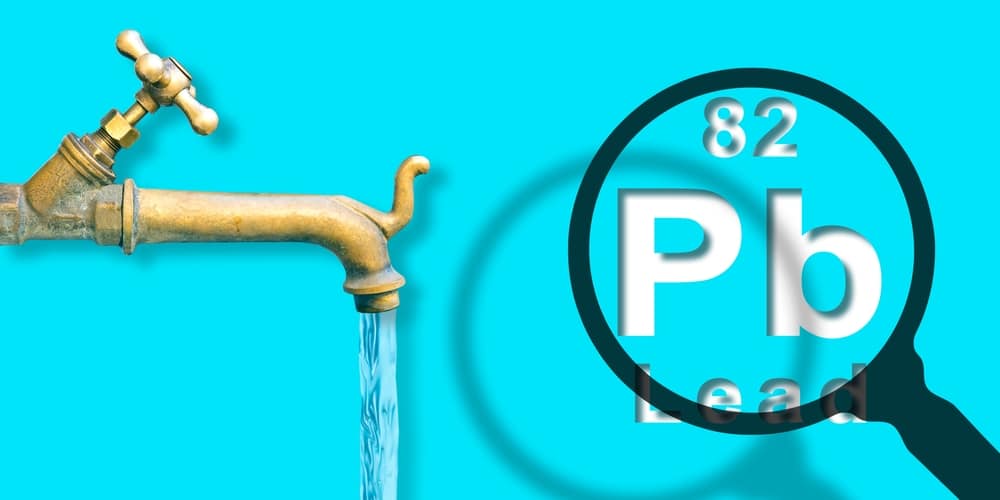
If the main water supply connects to your house through lead pipes, it might cause high levels of lead to leach into your drinking water. In this case, the best option is to replace your lead pipes.
Lead could also be leaching from the solder used to join copper pipes. If this is the case, a professional plumber can identify and replace the affected pipes.
If neither the pipes nor the solders are the source of lead in your water, then your municipal water supply source is the likely culprit.
Step 2: Test Lead Levels in Water
Once you’ve identified the source, the next step is to run a test to examine the levels of lead contamination in your water. You can buy a do-it-yourself water test kit or hire a professional to test your water.
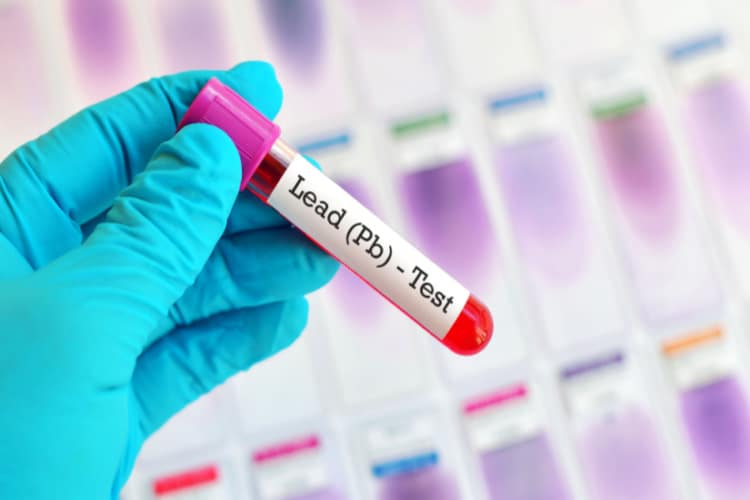
You should also check annual EPA reports that concern your public water system to know if the lead is coming from the fixtures in your house or the main water lines.
If the results show hazardous levels of lead in your water, you can then proceed with one or more of the treatment solutions recommended in below.
Step 3: Choose Treatment Method To Remove Lead From Water
Now that you’ve confirmed the level of lead in your water, it’s time to choose a treatment method. Depending on the levels of contamination and your personal preferences, you have 4 different options:
Option 1: Use a water filter to remove lead
Water filter is an excellent option if you want an easy, affordable way to remove lead from your water. There are many effective types of filters on the market, so be sure to choose one specifically designed to remove lead.
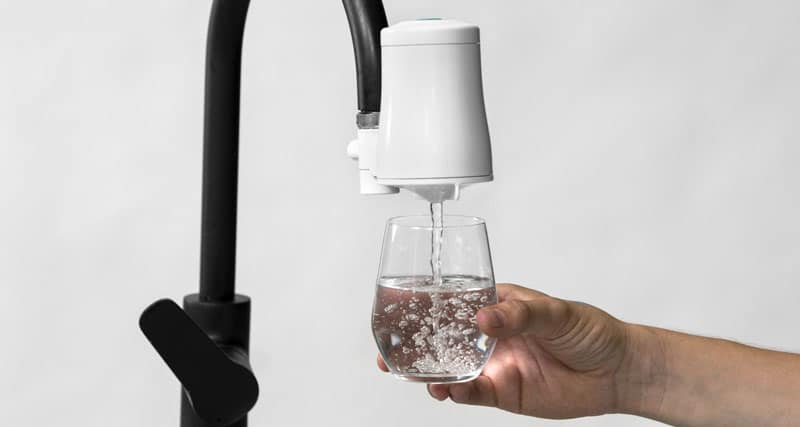
Option 2: Remove lead with Reverse Osmosis
Reverse osmosis: Reverse osmosis (RO) is a more expensive option, but it’s effective at removing lead and other contaminants from water. A reverse osmosis system consists of a combination of filters, and it can fit under the sink or the kitchen’s countertop. We recommend Waterdrop G3 P800 (undersink) and AquaTru (countertop).
Option 3: Remove lead with Distillation
Distillation is a process that involves collecting the condensed steam from boiling water. Although expensive and unscalable, this method is also an effective way to remove lead from your water.
Option 4: Replace Lead Pipes
If corroded lead pipes are the culprit, you’ll have to completely replace them. Unfortunately this method is also expensive, but there’s no other option. Overhauling your plumbing system is a significant renovation project, so it’s best to consult with a professional before proceeding.
Step 4: After Treatment, Check If the Water Is Free From Lead
After treating your water, you should check that your preferred lead removal method actually solved the problem. We recommend you conduct another lead water test (see step #2 for guidance) to be sure the lead in your water is gone.
Frequently Asked Questions
The most typical lead sources in drinking water are pipes, faucets, and other plumbing fixtures containing lead. Excess amounts of lead are more common in homes built before 1986 since the piping in those buildings are mostly lead or prone to rust.
However, new homes are at risk as well since service pipes that connect your house to the main water supply may contain lead even if the fixtures in the house don’t. In the past, builders often used lead in these pipes and the interior plumbing of homes and buildings.
Workers sometimes solder plumbing fixtures made of brass, galvanized iron, and other materials with lead. Some water tanks might be lined with lead as well, presenting a source for contamination.
Corrosion and rust in tanks and groundwater wells are additional potential lead contamination sources. High acidity and lower mineral content water will have the highest corrosion rates. Moreover, humidity, the water temperature, the age of the pipes, the length of time the water stays in the pipes, and the use of the protective coating might also cause corrosion in the long run.
No matter the source though, the solutions we listed in the third step above will help you efficiently deal with the issue.
Since you cannot taste, see, or smell it, it’s difficult to tell whether there’s lead in the water. The only way to know is to do a water test.
Lead is a health hazard if ingested, and exposure to high levels of it can cause serious health problems like brain damage, kidney damage, high blood pressure, and anemia. It can also cause infertility. Children and pregnant women are particularly vulnerable to the effects of lead.
After ingestion, it’s stored in the bones, blood, and tissue. As humans age, lead stored in the bones will be released into the blood, putting older individuals, especially women, at greater risk.
The most common symptoms of lead exposure are as follows:
Stomach problems and abdominal pain
Constipation
Pain/tingling in the hands and feet
Memory loss
Nervous system damage
Learning difficulties
Behavioral problems
Kidney damage
High blood pressure
Anemia
Lethargy
Headache
Weakness
The United States Environmental Protection Agency (EPA) set the maximum contaminant level goal for lead in drinking water at 0.015 mg/L.
This lead level is a result of the Safe Drinking Water Act (SDWA). Due to this legislation, the EPA set National Primary Drinking Water Regulations (NPDWRs or primary standards) for contaminants that may cause adverse human health effects.
Fortunately, the government can enforce these standards since they apply to public water systems.
Reverse osmosis systems for lead costs around $200 – $1000.
Distillation systems costs around $200 – $500.
Changing the pipes can cost from $1,200 to $12,000.
The cheapest way to remove lead from water is with a portable water filter like faucet filters. You can buy them for as little as $30. However, they may not be as effective as using an RO system of changing your lead corroded pipes.
Conclusion
Lead contamination is a serious hazard that shouldn’t be overlooked. You needn’t worry though, as there’s an ample number of solutions that can help you deal with it.
Having a whole house filtration system, an RO system, or a distillation mechanism will reduce the levels of lead in the water. In addition, you should have your water regularly tested by professionals.